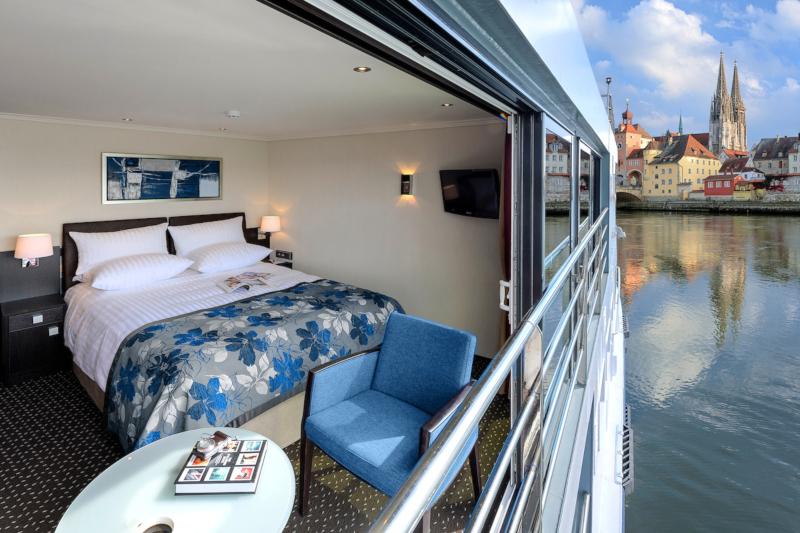This week, many travel advisors are dealing with fall-out from the U.S. Centers for Disease Control and Prevention’s (CDC) decision last week to recommend that consumers avoid cruising.
In our coverage of that news story, several top travel industry officials provided their views about the lack of fairness in that decision, given cruise industry performance compared with other travel sectors. In addition, today, Zane Kerby, president and CEO, American Society of Travel Advisors (ASTA) provided his perspective—calling the CDC's decision a "knee-jerk reaction."
To assist advisors in discussing “a balanced picture” of the health and safety aspects of cruise ships with their clients, here are factual tidbits and talking points offered by several cruise industry sources.
Facts About Cruising
Cruise Lines International Association (CLIA) provides a handy, helpful list of facts about cruising, the incidence of COVID-19 positive cases and how cruising compares with other travel segments.
CLIA emphasizes that cruise industry protocols are unique in their approach to effectively monitor, detect, and respond to potential cases of COVID-19. "Those protocols encompass the entirety of the cruise experience, incorporating testing, vaccination, screening, sanitation, mask-wearing and other science-backed measures," according to the trade group.
In addition, many CLIA members have announced additional measures in response to the Omicron variant, including strengthening testing, masking and other requirements, as well as encouraging booster vaccine doses for those eligible.
All that said, from the statistical side, here’s the story:
- More than 100 cruise ships have returned to U.S. waters, carrying more than 2 million people from a U.S. port since late June 2021.
- The cruise industry is the only industry in the U.S. travel and tourism sector that is requiring both vaccinations and testing for crew and guests.
- Vaccination rates onboard a cruise ship are upwards of 95 percent—significantly higher than the overall U.S. population, which is hovering at 62 percent.
- In the U.S. alone, the cruise industry administers nearly 10 million tests per week. That’s 21 times the rate of testing in the United States.
- The latest data show that, even with higher rates of testing, the cruise industry continues to achieve significantly lower rates of occurrence of COVID-19—33 percent lower than onshore.
- According to the CDC’s color-coding system, a cruise ship may be determined to be “yellow”—and, therefore, subject to CDC observation—if a threshold of 0.10 percent or more of its passengers (i.e., 7 out of 6,500) have tested positive in the last seven days, or if even just one crew member tests positive.
River Cruising Tidbits
River cruise lines also point out that their waterway journeys are attracting many guests who feel safer about traveling on a smaller ship. For example, Avalon Waterways’ river cruise vessels carry an average of 150 passengers.

From summer through fall, Avalon Waterways operated more than 100 cruises across Europe, Egypt and the Galapagos Islands. It also tested every cruise passenger in preparation for the journey home. Bottom line? Avalon Waterways ended its 2021 cruise season in late December with no positive COVID-19 cases aboard any of its ships.
“Not one of our guests or crew members tested positive for COVID in 2021,” an Avalon spokeswoman told Travel Agent.
Closer to home, on U.S. rivers, “American Queen Voyages has operated under SafeCruise protocols since March without a single cruise itinerary change due to COVID-19,” says Michael Hicks, the line’s marketing communications director.
“While no system can eliminate all risk, our protocols ensure pre-cruise testing and a fully vaccinated travel environment,” Hicks says. He adds that “AQV can rapidly identify cases with onboard equipment and also efficiently implement contact tracing in conjunction with our health partners if positive cases are identified.”
Hicks noted that the protocols have been reviewed and approved by the CDC, meet or exceed cruise industry standards and “provide meaningful measures to help ensure a safe travel experience. All positive cases are reported to the CDC and local health officials.”
Related Stories
Scenic Eclipse Returns to Antarctica Starting January 2022
Royal Caribbean Group Offers Intel on Omicron Cruise Impact
Carnival Celebrates Opening Of Dubai Harbour Cruise Terminal
Pandaw Secures New Funding, Plans to Restart in September 2022